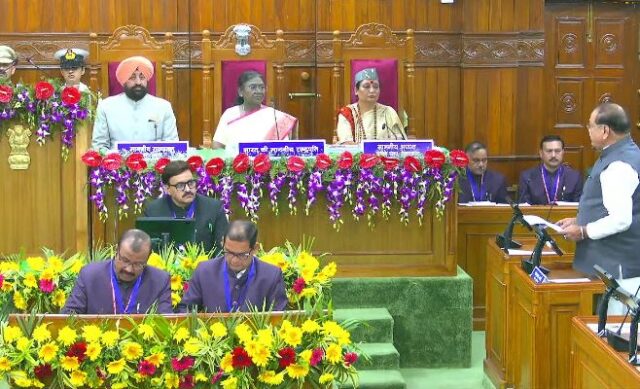Why bringing population control in Uniform Civil Code just a political gimmick

Prime Minister Narendra Modi said in Bhopal on Tuesday- ‘A house cannot run with two laws. BJP will remove confusion regarding Uniform Civil Code i.e. UCC… If triple talaq is an essential part of Islam then why is it not there in Pakistan, Indonesia, Qatar and Bangladesh?
Two things are clear from this statement of PM. Firstly, his government is preparing to bring a law on UCC and secondly, the Muslim population will be the biggest stakeholder on this issue.
The Law Commission is taking public opinion on this issue. The BJP government of Uttarakhand has also announced to bring UCC. Amidst this exercise, the big discussion is to include the population control law in the UCC. In such a situation, questions are being raised whether it is really necessary to control the population of the country by making laws? Is this just an election gimmick?
When the fertility rate of a group, state or country is less than 2.1, the population begins to decline. That is, the number of people who die in that group or country becomes less than those born. In such a situation, after a few years, the young population of the country starts getting old and the children become less to take their place. That is, the population of that group or country becomes old.
Presently the fertility rate of the Indian population is 2.05. That is, instead of increasing the population has now become stable. 31 of India’s 36 states have a fertility rate of less than 2.1.
Fertility rate refers to the average number of children every woman in a group, state or country is giving birth to during her lifetime. If the fertility rate of a country is 3, then the women of that country are giving birth to an average of 3 children in their lifetime.
The fertility rate of Muslim-majority states also increased to 1.8
States including Jammu-Kashmir, Kerala, West Bengal where the Muslim population is more than 20% also have fertility rates below 1.8. That is, in these Muslim-dominated states, 10 women are giving birth to an average of 18 children in their lifetime. That means on average less than two children per woman. The exception is UP, where the rate is 2.4.
The fertility rate of Muslims decreased faster than that of Hindus
NFHS data shows a decline in the fertility rate across all religious groups in the country. In the last 29 years i.e. between 1992 and 2021, the highest decline of 46.5% has been seen in the fertility rate of Muslims. At the same time, there has been a decline of 41.2% among Hindus.
In the NFHS-1 report of 1992-93, the fertility rate among Muslims was 4.41, which has now come down to 2.36. Whereas Hindus had 3.30 which has come down to 1.94.
Fertility rate dependent on education and economic condition, not on religion
Fertility rate is not directly related to religion but education, socio-economic status, health facility. This is also reflected in the NFHS-4 data for 2015-16. It is clearly seen that the fertility rate among low income people is 3.2, while among the rich it is 1.5. Similarly, the fertility rate of uppercaste is 1.9, backward class is 2.2, scheduled caste is 2.3, scheduled tribe is 2.5, Muslim is 2.6.
Lessons of population control should be learned from China
China is among the first countries to enact a law on population control. China enacted the one child law in 1979 when the population there was growing rapidly. But now this country with the largest population in the world is struggling with the extreme decrease in birth rate. Lancet’s report states that by the end of the century, China’s population will decrease from 140 crores to about 70 crores.
According to China’s National Bureau of Statistics, the country’s population crisis will deepen in 2022 as the population declines due to a rapid decline in the birth rate for the first time since 1961. Compared to 2021 in China, the population at the end of 2022 was 8.50 lakh less.
There is a fear that China has become a ‘demographic time bomb’. The number of people working here is decreasing rapidly and the elderly are increasing. Concerned about the growing population of the elderly, China stopped the one-child policy in 2015 and allowed two children to be born.
Due to this, there was a slight increase in the birth rate, but in the long run this scheme could not be completely successful in stopping the increasing elderly population. This is the reason why now China has started giving gifts to those who give birth to three children.






